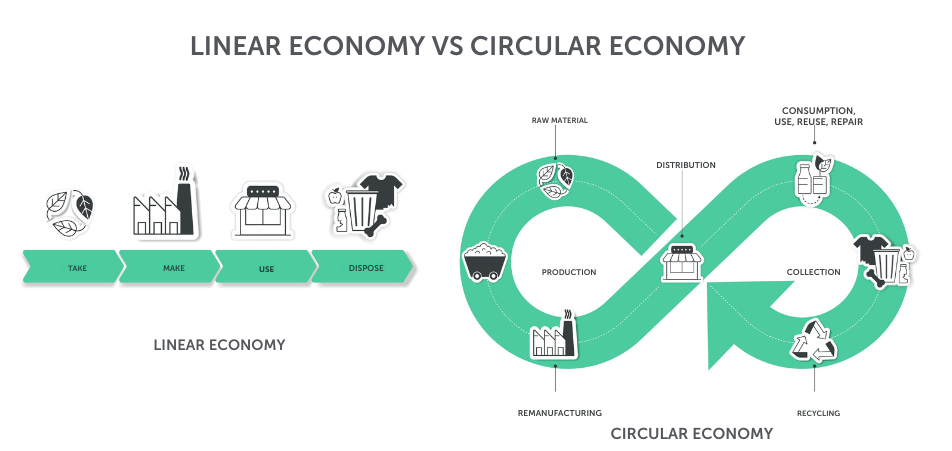Hyperscalers are large-scale data centers that provide scalable compute, storage, and network resources to users. As the backbone of the digital world, hyperscalers have a crucial role to play in reducing environmental impact while maintaining operational
efficiency.
As hyperscalers expand their operations to meet the growing demand for cloud computing, the environmental and financial costs of data center infrastructure are becoming increasingly significant. With rising emissions, growing energy consumption, and mounting
e-waste, hyperscalers are embracing sustainable strategies to achieve net-zero goals and optimize operational efficiency.
According to Goldman Sachs research, data centers worldwide consume 1-2% of overall power. However, this percentage will likely rise to 3-4% by
the end of the decade, with data center power demand growing 160% by 2030. This escalating power consumption underscores the need for more sustainable operational strategies.
Adopting circular economy solutions can revolutionize the way hyperscalers manage their IT infrastructure. Hyperscalers can align their growth with sustainability by extending hardware lifecycles through workload management and remanufacturing strategies,
reducing embodied carbon, and minimizing capital expenditures. Celestica is at the forefront of this transformation, helping hyperscalers implement end-to-end circular solutions that drive long-term value.
Why Hyperscalers Need Circular Economy Solutions
Transitioning to a circular economy model is more than an environmental imperative; it’s a strategic move that enables hyperscalers to drive efficiency, cut costs, and future-proof their operations.

The Environmental Impact of Traditional Data Center Practices
Traditional data center operations rely heavily on a linear model—produce, use, and discard—leading to significant environmental and financial challenges. This reliance escalates capital expenditures for hyperscalers, as data centers constantly purchase
new equipment to replace outdated systems, increasing the financial burden.
The shorter the lifecycle of hardware, the greater the chances of excessive e-waste and the depletion of valuable raw materials. As outdated equipment is discarded, landfills accumulate increasing amounts of electronic waste, which contains hazardous
substances that pose risks to the environment and human health.
Another significant issue is the high embodied carbon emissions of manufacturing new IT equipment. The production of servers, storage systems, and networking hardware requires substantial energy and raw materials, leading to a significant carbon footprint
before the devices are even deployed. This contributes to the overall environmental impact of data centers, which already consume vast amounts of electricity to maintain operations.
Exploring the Circular Economy Approach
A circular economy strategy provides hyperscalers with a sustainable alternative to the traditional linear approach. It allows them to maximize the value of their IT assets while reducing waste and emissions. Rather than continuously manufacturing new
equipment and discarding used hardware, hyperscalers can integrate refurbishment, remanufacturing, and reuse into their operations.
Extending IT hardware lifecycles is a key advantage of circular economy solutions. For example, Google extended server working life from three to four years back in 2021 and then extended
it again to five years for servers and networking in 2023. The result? The change reduced depreciation expenses by $983 million and increased net income by $765 million. Across the entire year, depreciation dropped by $3.9 billion, and net income
rose by $3 billion. Similarly, Meta extended servers and networking from four to five years, generating $1.5
billion in savings in 2022, including an $860 million reduction in depreciation expenses and a $693 million increase in net income.
By combining smart workload management strategies with remanufacturing practices, hyperscalers can achieve the best of both worlds, extending the life of assets and increasing performance and energy efficiency along the way. By refurbishing and repurposing
existing equipment, hyperscalers can reduce their dependence on new manufacturing, lower procurement costs, and conserve valuable raw materials.
Instead of treating IT assets as disposable, remanufacturing enables hyperscalers to upgrade software and hardware, such as CPUs, memory, fans, and power supplies, to improve energy efficiency. Once remanufactured, hardware and software can be redeployed
back into the data center with greater performance and energy efficiency. Alternatively, existing equipment can be repaired, upgraded, and deployed in a variety of other applications, such as edge computing environments or Tier 2/3 cloud services.
Another significant benefit of adopting circular economy principles is minimizing carbon footprints. Remanufacturing and refurbishing IT assets require substantially less energy and resources than producing new equipment. This results in a notable reduction
in embodied carbon emissions, aligning hyperscalers with corporate sustainability goals and global carbon reduction initiatives.
Cost optimization is also a compelling factor for hyperscalers. By implementing a circular approach, organizations can reduce capital expenditures, lower the total cost of ownership (TCO), and optimize data center efficiency. With reliable access to refurbished
and remanufactured hardware, hyperscalers can maintain performance standards while benefiting from significant cost savings.
Celestica’s Circular Economy Solutions for Hyperscalers
Celestica provides a comprehensive suite of circular economy services to enhance sustainability and efficiency in hyperscale operations.
Design for Circularity
-
Provides a circular model to manage products through design, usage, maintenance, reuse, remanufacture and recycling.
-
Investments in leading-edge product roadmaps, design capabilities and platform innovations aligned with market standards and emerging technology trends.
-
Ensures environmental compliance throughout the product lifecycle, from sourcing of materials to product disposal.
-
Processes and products are designed with circularity in mind, ensuring recovered materials are used in manufacturing and that materials have a high level of recoverability, through either reuse, remanufacturing or recycling.
-
Designs and manufactures more energy-efficient products, including the use of titanium instead of platinum within the power supply unit, for improved energy efficiency.
Remanufacturing & Reuse
-
Extends hardware lifecycles by repurposing equipment for redeployment within the data center, edge computing, or hybrid cloud environments.
-
Ensures hardware meets or exceeds original equipment manufacturer (OEM) specifications before redeployment, maximizing reliability.
-
Provides cost-effective, high-quality redeployment options for Tier 2/3 cloud services.
-
Supports hyperscalers in reducing procurement costs while maintaining high performance.
Depot Refurbishment & Repair
-
Reduces downtime through Celestica’s Advanced Exchange Program (AEP), which provides ready-to-use refurbished equipment.
-
Enhances service efficiency with real-time tracking of refurbished assets.
Data Center Management Services
-
Facilitates seamless installation, de-installation, and on-site support for IT infrastructure.
-
Enables hyperscalers to streamline logistics, reducing waste and improving sustainability.
-
Ensures efficient hardware transition management, minimizing disruptions in cloud operations.
The Economic and Sustainability Benefits
Adopting circular economy solutions delivers financial and environmental advantages for hyperscalers, creating a more resilient and cost-effective operational model.
From an economic perspective, integrating refurbished and remanufactured equipment into the supply chain significantly reduces capital expenditures. Instead of continuously investing in new hardware, hyperscalers can extend the lifespan of existing assets,
lowering the total cost of ownership (TCO) while maintaining operational efficiency. By optimizing asset utilization, companies can free up resources for innovation and strategic growth rather than sinking budgets into hardware replacements.

Beyond cost savings, circular economy solutions also provide substantial environmental benefits. The IT industry faces mounting pressure to reduce its carbon footprint, and extending hardware lifecycles is one of the most effective ways to achieve this.
By keeping equipment in use longer, hyperscalers can reduce the embodied carbon associated with manufacturing new devices, cutting emissions at every stage of the product lifecycle. Additionally, by repurposing and recycling IT assets rather than
discarding them, companies can significantly curb e-waste generation, contributing to global sustainability efforts.
Through the strategic implementation of circular economy principles, hyperscalers can align their business objectives with environmental responsibility, ensuring long-term efficiency, resilience, and sustainability.
The Celestica Advantage
Celestica stands out as a global leader in circular economy solutions, providing tailored sustainability strategies for hyperscalers. Our key differentiators include:
-
Products designed with circularity in mind: As leaders in the design and engineering of platform solutions, Celestica offers solutions that are designed for full-lifecycle circularity and closed-loop regeneration.
-
Innovative supply chain technology: The SpectrumPro platform enables real-time tracking of IT assets.
-
End-to-end lifecycle management: From refurbishment to logistics, Celestica ensures seamless integration of circular economy solutions.
-
Sustainability leadership: We align with industry best practices to support hyperscalers in achieving their ESG and net-zero commitments.
Take the Next Step Towards Sustainable Hyperscale Operations
Enhance your hyperscale operations with Celestica’s circular economy solutions. Contact us today to explore how our expertise can help you reduce costs, extend hardware lifecycles, and achieve your sustainability goals.